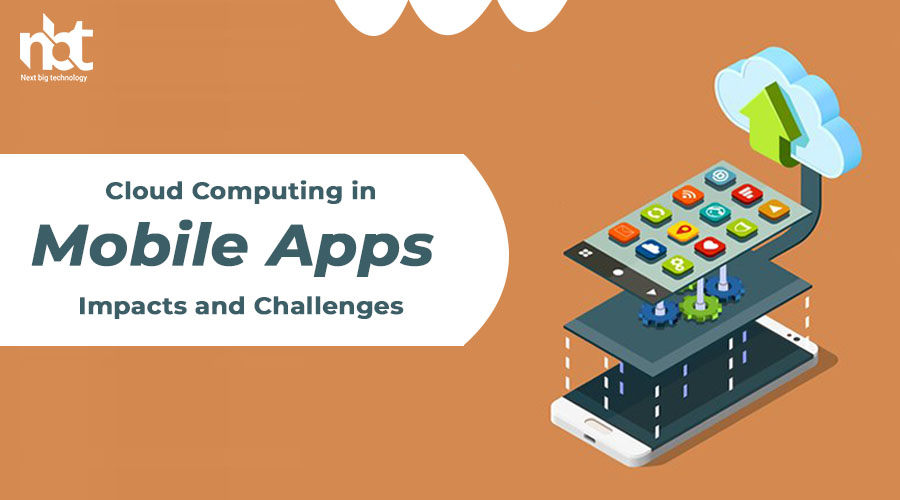Table of Contents
Introduction:
Cloud computing has revolutionized the way mobile applications are developed and deployed. By leveraging the power of cloud infrastructure, mobile app developers can access scalable resources, enhance app performance, and improve user experiences. In this blog, we will explore the impacts and challenges of cloud computing in mobile apps. We will discuss the benefits that cloud computing brings to mobile app development, such as scalability, cost-effectiveness, and seamless data synchronization. Additionally, we will examine the challenges faced by developers when implementing cloud-based solutions and strategies to overcome them.
Scalability and Flexibility:
Cloud computing provides mobile app developers with scalability and flexibility, allowing them to accommodate varying user demands. With cloud-based infrastructure, apps can handle fluctuations in user traffic, scale resources up or down based on demand, and ensure optimal performance during peak usage periods. Cloud platforms, such as Amazon Web Services (AWS) or Microsoft Azure, offer auto-scaling capabilities, enabling seamless scalability without the need for additional hardware investments.
Cost-Effectiveness:
Cloud computing offers cost savings for mobile app development. By leveraging cloud-based infrastructure, developers can eliminate the need to purchase and maintain physical servers. They can pay for resources on a pay-as-you-go basis, reducing upfront costs and optimizing expenses. Cloud platforms also provide pricing models that align with usage patterns, enabling developers to control costs effectively.
Enhanced App Performance:
Cloud computing allows mobile apps to offload resource-intensive tasks to the cloud, improving overall app performance. By leveraging cloud-based processing power and storage, developers can optimize app responsiveness, reduce latency, and handle computationally intensive operations more efficiently. This results in a seamless user experience and faster app performance, even on devices with limited computational capabilities.
Seamless Data Synchronization:
Cloud computing enables seamless data synchronization across multiple devices. With cloud-based storage solutions, such as Amazon S3 or Google Cloud Storage, app developers can ensure that user data remains consistent and up-to-date across devices. This allows users to access their data from any device, enhancing user convenience and providing a unified experience.
Improved Collaboration:
Cloud-based collaboration tools, such as cloud storage, version control systems, and communication platforms, enable effective collaboration among mobile app development teams. Developers can easily share code, documents, and assets, facilitating seamless collaboration and faster iteration cycles. Cloud-based collaboration tools promote efficient teamwork, resulting in higher productivity and better app development outcomes.
Data Security and Privacy:
While cloud computing offers numerous benefits, data security and privacy remain key concerns. Storing sensitive user data in the cloud requires robust security measures to protect against unauthorized access and data breaches. Mobile app developers must implement encryption, access controls, and regular security audits to safeguard user data. Compliance with data protection regulations, such as GDPR or CCPA, is crucial to ensure user privacy and maintain trust.
Reliance on Internet Connectivity:
Cloud-based mobile apps heavily rely on internet connectivity. Users need a stable and reliable internet connection to access cloud resources and synchronize data. In areas with limited or unreliable network coverage, users may experience disruptions in app functionality. Mobile app developers must consider offline capabilities and implement strategies like caching or local storage to provide a seamless user experience in offline scenarios.
Integration Complexity:
Integrating cloud services into mobile apps can be complex, especially when dealing with multiple cloud providers or third-party APIs. Developers need to understand the intricacies of integrating various cloud services, manage authentication and authorization mechanisms, and ensure seamless communication between the app and the cloud. Robust error handling and fallback mechanisms should be implemented to handle scenarios when cloud services are unavailable or encounter issues.
Vendor Lock-In:
Adopting cloud-based solutions may lead to vendor lock-in, where the app becomes tightly coupled with a specific cloud provider’s ecosystem. Switching cloud providers or migrating to on-premises infrastructure can be challenging and time-consuming. Developers should carefully consider vendor lock-in risks and design their applications with a level of abstraction to ensure portability and flexibility.
Data Transfer and Bandwidth Limitations:
Transferring large amounts of data between the mobile app and the cloud can be bandwidth-intensive and time-consuming, especially in areas with limited network speeds or high data costs. Developers must optimize data transfer, implement compression techniques, and minimize unnecessary data exchanges to reduce bandwidth usage and enhance user experience.
Conclusion:
Cloud computing has transformed mobile app development by providing scalability, cost-effectiveness, enhanced app performance, and seamless data synchronization. However, developers must address challenges related to data security, internet connectivity, integration complexity, vendor lock-in, and bandwidth limitations. By understanding these challenges and implementing appropriate strategies, mobile app developers can harness the power of cloud computing to build robust, scalable, and user-friendly applications. Cloud computing continues to shape the mobile app landscape, enabling developers to innovate, improve user experiences, and deliver impactful solutions in an increasingly connected world.
Thanks for reading our post “Cloud Computing in Mobile Apps: Impacts and Challenges”. Please connect with us to know more about cloud computing.










